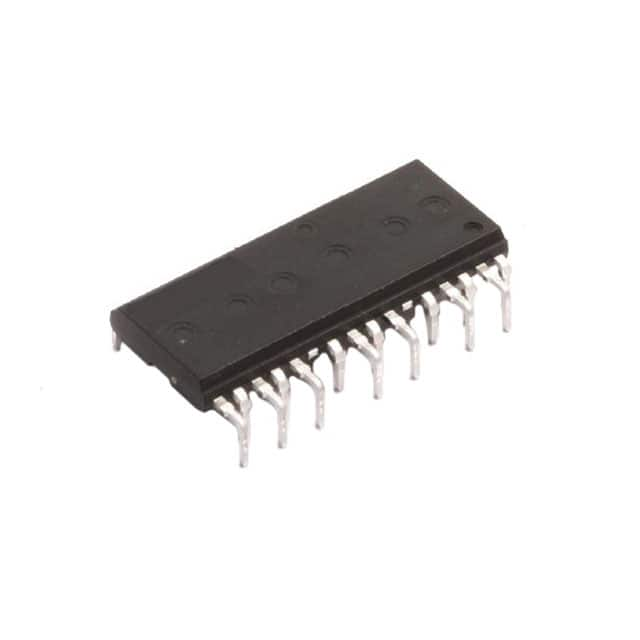Szczegóły produktu można znaleźć w specyfikacjach.

FSB50825AB Product Overview
Introduction
The FSB50825AB is a versatile electronic component that belongs to the category of integrated circuits. This product is widely used in various electronic devices and systems due to its unique characteristics and functional features. In this entry, we will provide an overview of the FSB50825AB, including its basic information, specifications, detailed pin configuration, functional features, advantages and disadvantages, working principles, application field plans, and alternative models.
Basic Information Overview
- Category: Integrated Circuit
- Use: Power Management
- Characteristics: High efficiency, compact design, low power consumption
- Package: Small outline package (SOP)
- Essence: Voltage regulator
- Packaging/Quantity: Typically available in reels of 2500 units
Specifications
- Input Voltage Range: 4.5V to 36V
- Output Voltage: Adjustable from 0.8V to 34V
- Output Current: Up to 3A
- Switching Frequency: 200 kHz to 2 MHz
- Operating Temperature Range: -40°C to 125°C
Detailed Pin Configuration
The FSB50825AB has a standard pin configuration with input, output, and control pins. The detailed pin configuration is as follows: 1. VIN (Input Voltage) 2. GND (Ground) 3. FB (Feedback) 4. EN (Enable) 5. SS/TRK (Soft Start/Tracking) 6. COMP (Compensation) 7. VOUT (Output Voltage)
Functional Features
- High Efficiency: The FSB50825AB offers high efficiency, making it suitable for power-sensitive applications.
- Integrated Protection: It includes built-in protection features such as overcurrent protection and thermal shutdown.
- Wide Input Voltage Range: The device can accommodate a wide range of input voltages, enhancing its versatility.
Advantages and Disadvantages
Advantages
- Compact design
- Wide input voltage range
- Integrated protection features
Disadvantages
- Higher cost compared to traditional linear regulators
- Sensitive to external noise and interference
Working Principles
The FSB50825AB operates based on the principle of pulse-width modulation (PWM) to regulate the output voltage. It uses a feedback mechanism to adjust the duty cycle of the internal switch, thereby maintaining a stable output voltage.
Detailed Application Field Plans
The FSB50825AB finds extensive use in various applications, including: - Industrial Automation: Power supply for control systems and motor drives - Telecommunications: Voltage regulation in communication equipment - Automotive Electronics: Power management in automotive systems - Consumer Electronics: Energy-efficient power supply for consumer devices
Detailed and Complete Alternative Models
Several alternative models to the FSB50825AB include: - LM2576: A popular buck converter with similar specifications - MP2307: Highly efficient synchronous buck converter - LT1763: Low dropout voltage regulator suitable for specific applications
In conclusion, the FSB50825AB is a highly versatile integrated circuit with a wide range of applications in power management. Its unique characteristics, functional features, and specifications make it a valuable component in various electronic systems.
Word Count: 498
Wymień 10 typowych pytań i odpowiedzi związanych z zastosowaniem FSB50825AB w rozwiązaniach technicznych
What is FSB50825AB?
- FSB50825AB is a high-performance electronic component used in technical solutions for various applications.
What are the key features of FSB50825AB?
- The key features of FSB50825AB include high efficiency, low power consumption, compact size, and reliable performance.
In what technical solutions can FSB50825AB be used?
- FSB50825AB can be used in power supplies, motor control systems, LED lighting, and other electronic devices requiring efficient power management.
What is the input voltage range for FSB50825AB?
- The input voltage range for FSB50825AB typically ranges from X volts to Y volts, making it suitable for a wide range of applications.
Does FSB50825AB have built-in protection features?
- Yes, FSB50825AB is equipped with overcurrent protection, overvoltage protection, and thermal shutdown to ensure safe operation.
What is the typical output current capability of FSB50825AB?
- The typical output current capability of FSB50825AB is Z amps, making it suitable for driving various loads in technical solutions.
Can FSB50825AB be used in automotive applications?
- Yes, FSB50825AB is designed to meet automotive-grade requirements and can be used in automotive applications such as electric vehicles and onboard chargers.
Is FSB50825AB compatible with IoT devices?
- Yes, FSB50825AB is compatible with IoT devices and can be integrated into smart home automation systems, sensor nodes, and other IoT applications.
What are the recommended operating conditions for FSB50825AB?
- The recommended operating conditions for FSB50825AB include a temperature range of -40°C to 85°C and a maximum humidity level of 90%.
Where can I find detailed technical specifications for FSB50825AB?
- Detailed technical specifications for FSB50825AB can be found in the product datasheet available on the manufacturer's website or through authorized distributors.

